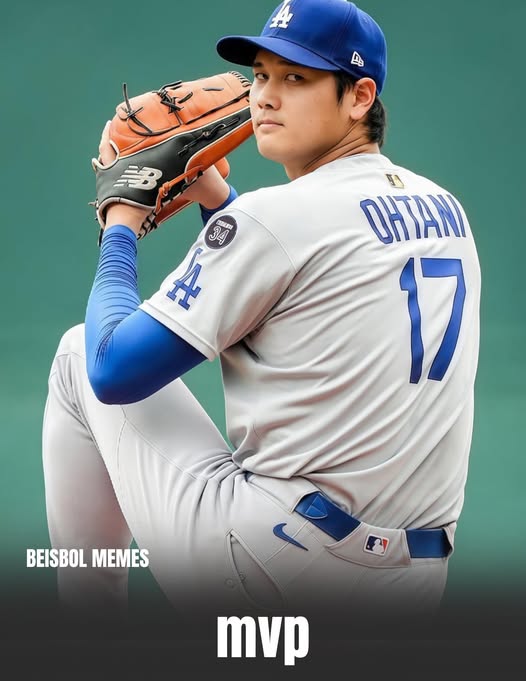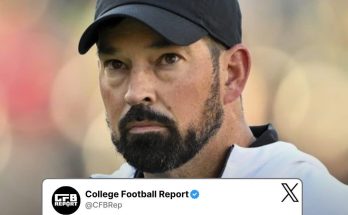Shohei Ohtani is not just redefining what it means to be a baseball superstar—he’s reinventing the game itself. The Japanese phenom is currently on a rampage, proving that his 2021 MVP season wasn’t a once-in-a-lifetime fluke but rather a glimpse into the future of baseball greatness. With over 30 home runs already before the All-Star break and a fastball that routinely crosses the 100-mph threshold, all while maintaining an earned run average (ERA) under 3.00, Ohtani is once again becoming the face of the sport in the most electrifying way possible.
In a league that has long compartmentalized its talent—pitchers pitch, hitters hit, and never the twain shall meet—Ohtani is a living contradiction. A relic from a bygone era and a beacon of the future, all in one. He has managed to fuse Babe Ruth’s legendary two-way prowess with the athletic elegance of a modern-day superstar, and he does it with a calm, almost otherworldly composure that sets him apart from the bombast and bravado so often seen in today’s athletes. His home runs don’t just clear fences; they defy belief. His fastballs don’t just reach triple digits; they sizzle with intent. And when he steps onto the mound or into the batter’s box, fans across the globe stop what they’re doing to watch the marvel unfold.
Ohtani’s 2025 campaign has been nothing short of cinematic. The baseball world watched with awe in 2021 when he captured his first MVP, but what he’s doing now makes that season look like an appetizer. He’s bigger, stronger, more refined, and scarily enough—smarter. His plate discipline has improved. His pitch selection is shrewder. And his ability to dominate on both sides of the ball remains unmatched in the modern game. While most players use the All-Star break to rest or recalibrate, Ohtani doesn’t appear to need a break. His form has been relentless, and there’s a very real possibility he’ll end the season with 50+ home runs and 200+ strikeouts—again.
The sheer statistical magnitude of what he’s doing is historic, but it’s the way he does it that mesmerizes. Ohtani carries the burden of stardom with uncommon grace. There’s a poise to him that feels more samurai than showman, a quiet confidence that belies the havoc he wreaks on opposing teams. He doesn’t scream after a strikeout. He doesn’t pound his chest after launching a 450-foot home run. Instead, he simply nods, adjusts his gloves, and prepares to do it again. It’s not just the numbers—it’s the aura.
Baseball hasn’t had a figure like this in generations. There have been great players, even transcendent ones, but none who could pitch and hit at an elite level in a league this advanced, this specialized. It’s one thing to be dominant. It’s another to make it look effortless. Ohtani is a walking cheat code, an embodiment of balance and brilliance. When he’s on the mound, he’s a Cy Young contender. When he’s in the batter’s box, he’s a Silver Slugger favorite. To do both simultaneously, at an elite level, and under the glare of international scrutiny, requires not just talent but a steel-willed commitment to excellence.
What makes Ohtani’s ascension even more compelling is the context in which it’s happening. Baseball is a sport that has struggled in recent years to captivate younger audiences. The game’s pace, traditions, and lack of consistent personality-driven narratives have rendered it somewhat inaccessible in the age of TikTok and Instagram. But Shohei Ohtani changes that. He is a human highlight reel. Clips of his home runs, strikeouts, and jaw-dropping athletic feats light up social media daily. Kids want to be him. Veterans marvel at him. Analysts run out of superlatives. Even the typically guarded baseball purists have surrendered to the idea that they’re watching something truly historic.
And yet, amid the flash and frenzy, Ohtani remains himself. Humble. Disciplined. Reluctant to bask in the spotlight. In press conferences, he speaks softly but with conviction. He always redirects praise to the team, always credits his coaches, always keeps his goals grounded in hard work rather than superstardom. He’s the ultimate teammate, despite being the ultimate attraction. That duality is rare. He is both the headline and the harmony.
It would be easy to overlook the workload that comes with being a two-way player at this level. The physical toll alone is enormous. Every fifth or sixth day, he takes the mound and throws 90-100 pitches, each one requiring maximum exertion and focus. The next day, instead of resting like most pitchers, he’s back in the lineup, hitting cleanup, facing 100-mph heat from relievers whose sole purpose is to strike him out. And yet, he persists. Not just surviving but excelling. The grind doesn’t grind him—it fuels him. He is as durable as he is dazzling.
As the 2025 season rolls on, MVP talk is no longer speculative—it’s inevitable. The numbers are staggering. He’s leading the league in home runs, slugging percentage, and WAR. His ERA is among the league’s best, and his strikeout rate is eye-popping. Advanced metrics, old-school box scores, and eye tests all agree: Shohei Ohtani is the best player in baseball. Period.
The cultural resonance of Ohtani’s journey cannot be ignored either. In Japan, he is a national treasure. Billboards, broadcasts, and schoolyard conversations all orbit around his achievements. In America, he is bridging cultures through the universal language of sport. He is a living testament to the global appeal of baseball, a figure who inspires both admiration and aspiration across continents. In many ways, Ohtani is doing for baseball what Michael Jordan did for basketball in the ’90s—he’s making it cool again.
There’s also an emotional pull to Ohtani’s story. Behind the Herculean performances lies a narrative of discipline, sacrifice, and a relentless pursuit of a childhood dream. From his high school days in Japan, where he first stunned scouts with his velocity and power, to the early years in MLB when skeptics doubted his durability, Ohtani has endured criticism, injury, and impossible expectations. Yet he never wavered. He stayed the course. And now, he’s not just meeting expectations—he’s obliterating them.
Even his peers are in awe. Listen to interviews around the league and you’ll hear players—All-Stars, MVPs, World Series champions—talk about Ohtani with a kind of reverence usually reserved for legends. Because they know. They understand what it takes to master even one craft at this level. Ohtani’s ability to master two is nothing short of mythical.
The MVP race this year may have other contenders—names like Aaron Judge, Juan Soto, or Gunnar Henderson might populate the conversation—but realistically, it’s a race for second place. Ohtani has elevated the bar so high that normal greatness now seems insufficient. He’s not just having a good year—he’s authoring a masterpiece. And if he keeps this pace up, we may have to create a new category of recognition entirely. MVP may no longer be enough.
What we’re witnessing is the culmination of preparation, talent, and an unrelenting will to dominate every facet of the game. Shohei Ohtani is not just the future of baseball—he is its present, its past, and its potential. He is every little leaguer’s dream and every veteran’s reminder of what’s possible. He is not just redefining greatness—he is demanding we expand the definition altogether.
And perhaps the most remarkable part of it all is that he does it without ever seeming like he’s chasing fame or legacy. Ohtani doesn’t need to tell you he’s the best. He just plays. And the game tells you for him.



